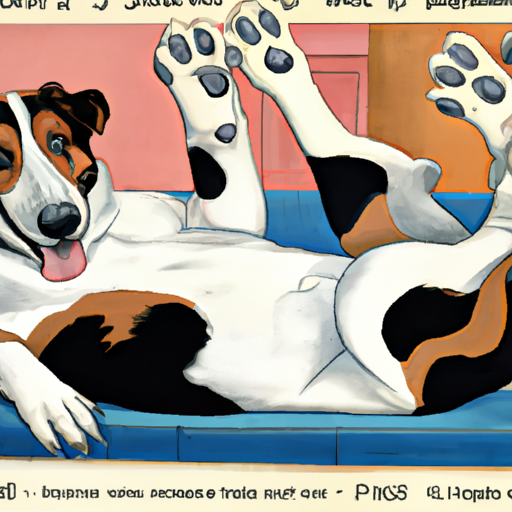As a caregiver, you are responsible for every aspect of your dog’s health, ranging from diet and exercise to their basic anatomy. Understanding how many toes your dog has can enhance your care duties, ensuring you are well-equipped to check for any abnormalities or injuries.
The Basics of Canine Anatomy
When it comes to the number of toes, dogs typically have 16. Four on each paw, to be precise. But, like us humans, dogs have a little extra – a dewclaw.
- Front Paws: Dogs have five toes on their front paws. Four are in a line with pads that touch the ground during walking. The fifth, the dewclaw, is on the inner part of the paw and doesn’t touch the ground.
- Back Paws: The back paws usually have four toes. Some dogs, however, also have dewclaws on their back paws.
| Paw | Number of Toes |
|---|---|
| Front | 5 (Including the Dewclaw) |
| Back | 4 (5 if Dewclaw is Present) |
The Purpose of the Dewclaw
The dewclaw is often compared to a human’s thumb because of its location. Although it doesn’t serve a clear purpose in domestic dogs, some believe it aids in holding bones while eating, provides extra grip when running or climbing, and helps in grooming.
Genetic Variations and Breed-Specific Differences
Certain breeds like the Great Pyrenees and Saint Bernard often have an extra toe on their back paws, known as a “double dewclaw”. This is a breed-specific trait and is considered a desirable feature.
The Importance of Regular Paw Check-ups
To provide the best care for your dog, regular paw check-ups are essential. Look for anything unusual such as swelling, redness, or cuts. Also, keep an eye on their nails, including the dewclaw, for any signs of overgrowth or breakage.
Potential Paw Problems
While dogs are generally resilient creatures, their paws can sometimes encounter problems. Common issues include:
- Ingrown nails
- Cuts or abrasions
- Torn pads
- Foreign bodies lodged in the paw
Frequently Asked Questions
Q: Should I remove my dog’s dewclaws?
A: Unless the dewclaw is causing problems or is loosely attached, it’s usually best to leave it alone.
Q: How often should I check my dog’s paws?
A: Ideally, once a week. If your dog is active or walks on rough surfaces, you may need to check more frequently.
Q: What should I do if my dog’s paw is injured?
A: If the injury seems minor, clean it with warm water and apply a pet-safe antiseptic. For severe injuries or if you’re unsure, consult your vet immediately.
Remember, understanding your dog’s anatomy is a crucial part of caregiving. So, keep exploring, keep learning, and continue providing the best possible care for your furry friend.



